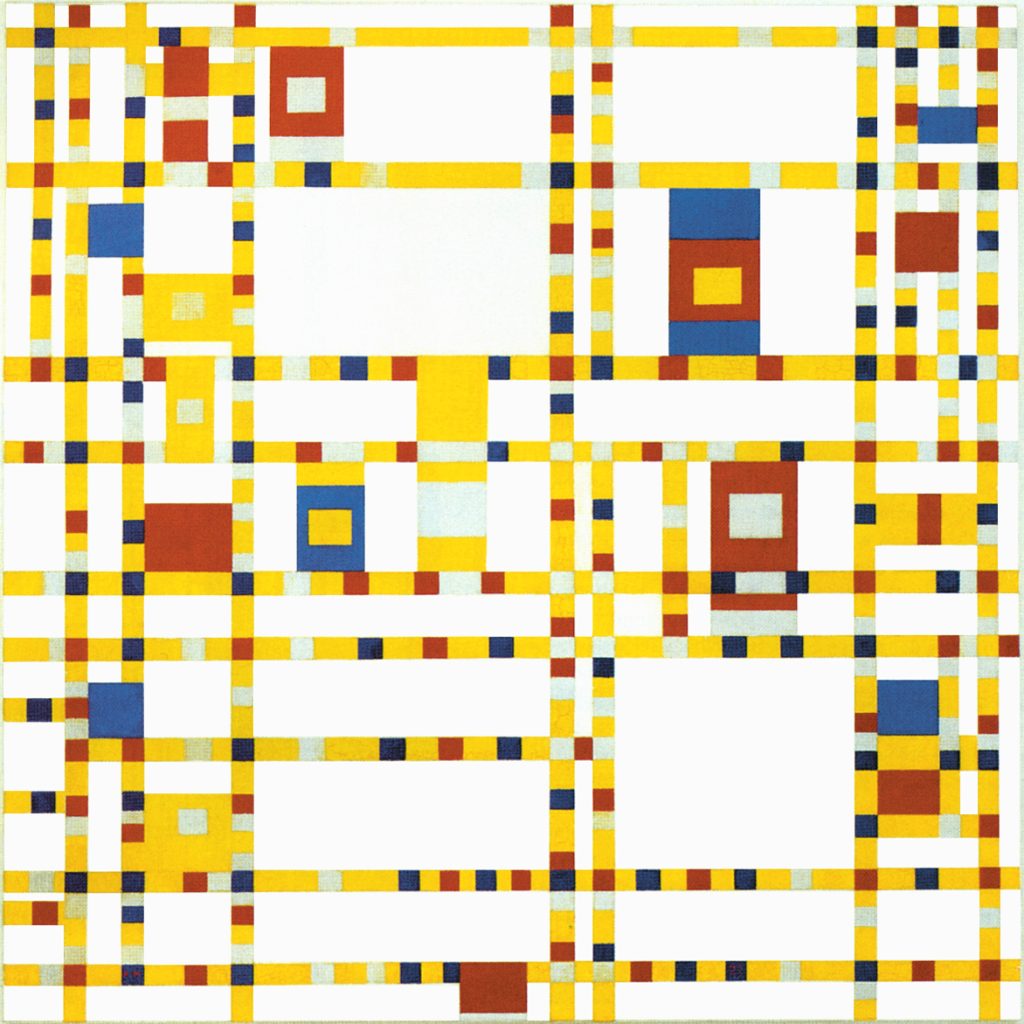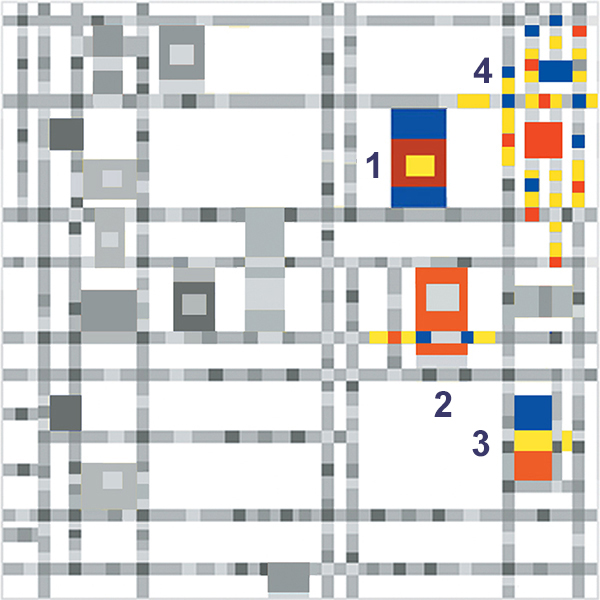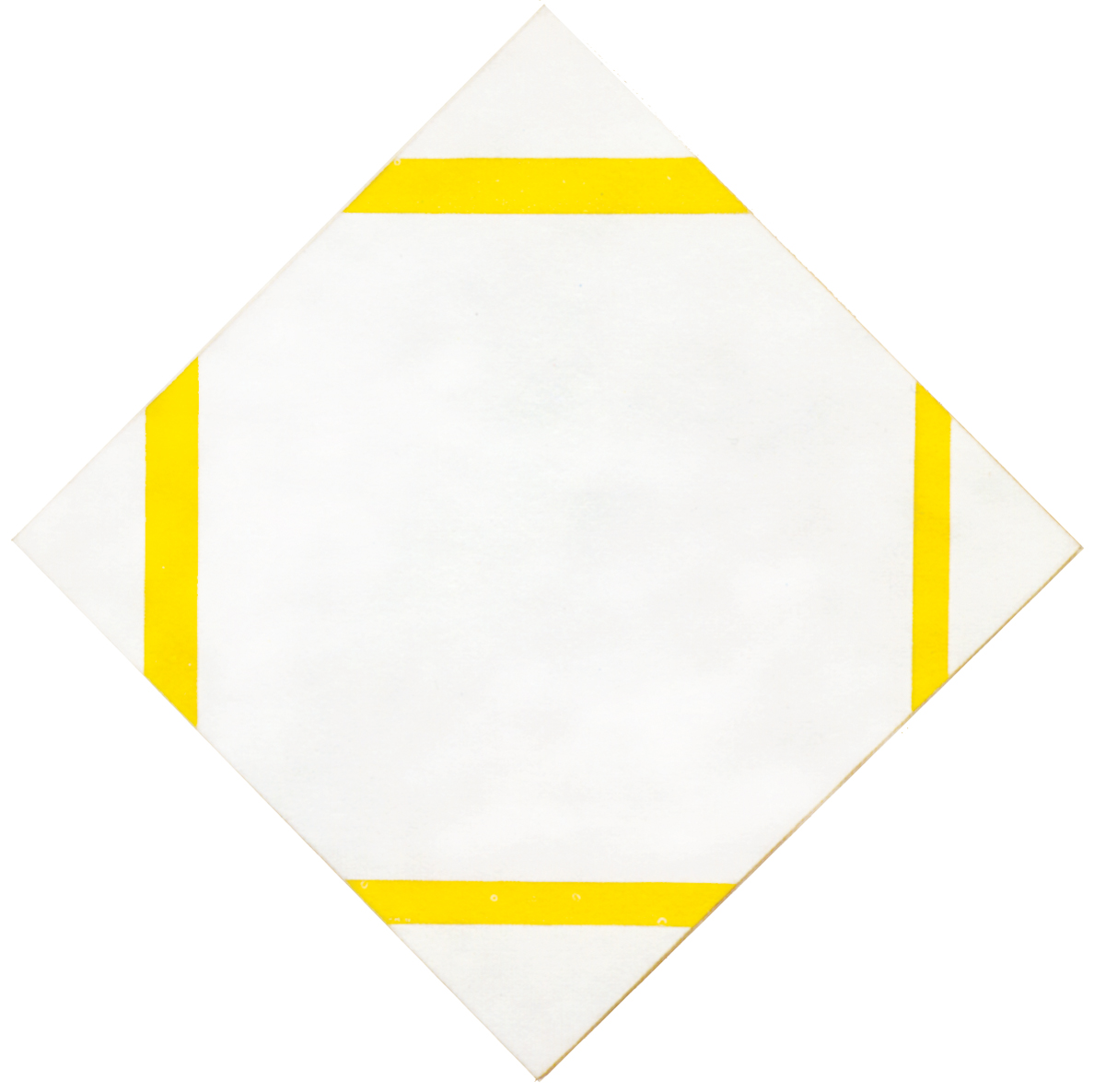
The fragmented yellow, red and blue space of the lines turns into a steady and lasting space with the unitary plane. It would, however, be a mistake to see this as calm in the sense of a total absence of inner tension.
It is necessary to see the respective measures and positions of yellow, red, and blue give birth to a free interplay of reciprocal tensions. Any slight horizontal expansion of the yellow would produce an imbalance and set the mechanism of oppositions back in motion, as would even the slightest vertical increase in the blue.
The unitary plane should rather be seen as a temporary synthesis which could reopen to the manifold space around as we shall see in diagram F:

Plane 2 is the same size as plane 1 but consists solely of red and gray rather than the three primary colors.
Moreover the horizontal line running suddenly through the vertical plane tends visually to disrupt the previously attained balanced interpenetration of horizontal and vertical achieved with plane 1.
After the equivalence of the opposite directions and the synthesis of three primary colors attained in plane 1, the colors are again reduced in plane 2 and the external dynamism of the lines reappears to generate new opposition. After the degree of comparative calm, constancy and unity achieved in plane 1, spatial movement thus seems to reappear in plane 2. Unity opens up to external space and the colors are separated and flow back toward the more dynamic and variable space of the lines (3 and 4).
The indication provided by plane 2 finds further confirmation in plane 3, where blue, yellow, and red are juxtaposed but no longer interpenetrate as they did in plane 1. The juxtaposition produces the impression of three separate planes, whereas the interpenetration combines the three colors in a single structure of greater stability. Note how the yellow on the right of plane 3 already seeks to cross the perimeter of the plane and flow into the yellow of the surrounding lines. Plane 3 can therefore be seen as plane 1 in the process of dissolution.

Configuration 4 possibly represents the conclusion of the process of reopening the unitary synthesis in that it can be seen as a continuation of the disintegration of plane 3.
Space proceeds from a comparatively static and wholly internal condition (1) toward one of growing instability (2) that is gradually transformed into the more dynamic and variable external space of the lines (3 and 4).
From expansion toward increasing concentration (yellow, red and blue fragments dispersed along the opposite lines gradually transform into a synthesis) and then from concentration back to expansion: this is the way Broadway Boogie Woogie breathes. Through a dynamic process the one and the many merge and transform into each other.
